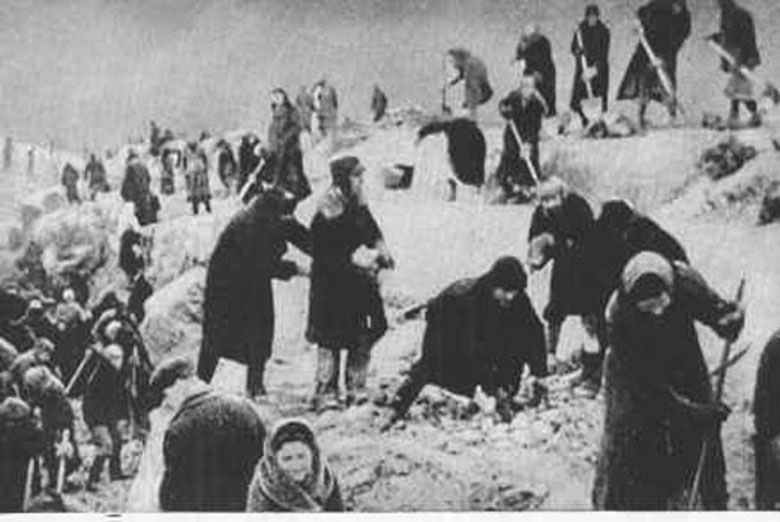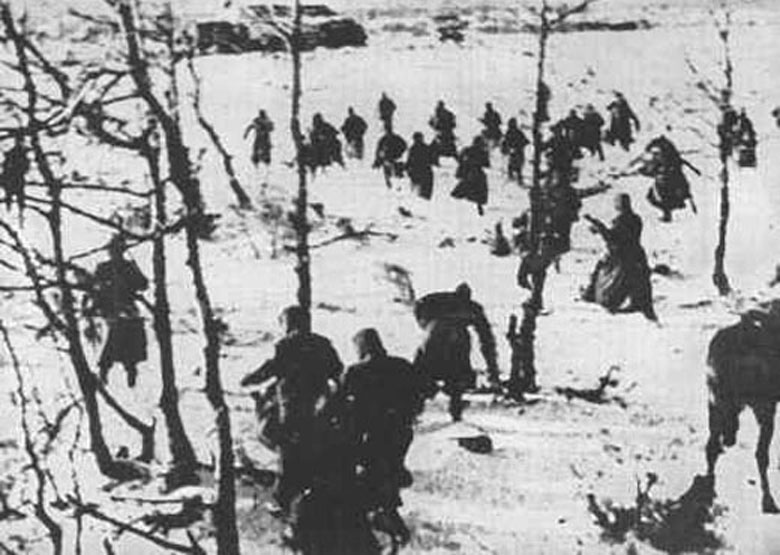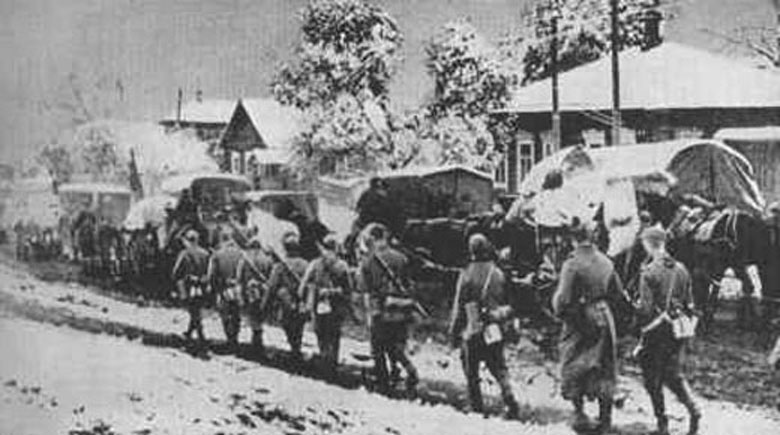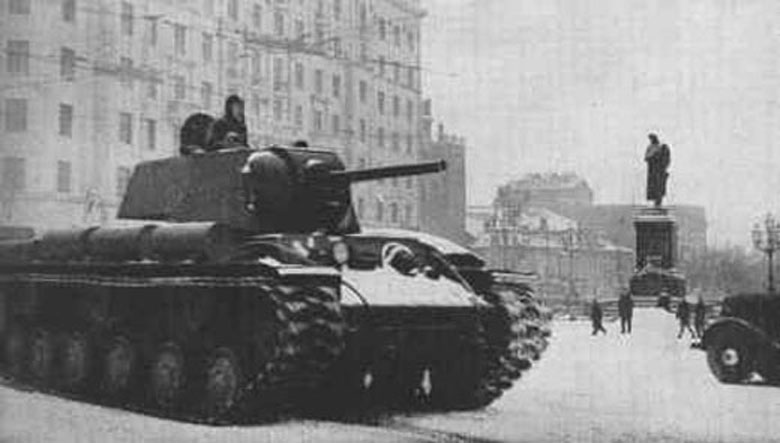Atomic Research
A secret project known as the Manhattan Engineering District is authorized by President Roosevelt. The project is under the control of the US Office of Scientic Research and Development and will begin the development of atomic weaponry. It will eventually be renamed the Manhattan Project.
[Battle of the Atlantic
- The British steamer GreenlandM (1281t) sinks on a mine off Lowestoft with the loss of 9 crewmen.
- U-131 sinks the British steamer Scottish Trader (4016t), a straggler from Convoy SC-56, south of Iceland with the loss of her entire crew of 43.
Diplomatic Relations
- Pres Roosevelt makes a final appeal to the Japanese Emperor for peace. He calls on Japan to withdraw its troops from Indochina. He says a large military force there creates 'a reasonable doubt on the part of other nations that this continuing concentration in Indochina is not defensive in its character. . . . the people of the Philippines, of the hundreds of islands of the East Indies, of Malaya, and of Thailand itself are asking themselves whether these forces of Japan are preparing or intending to make attack in one or more of these many directions.' This is misunderstood and resented by the Japanese leaders who believe it wrong for the Emperor to be given the burden of such decisions. There is no Japanese reply. Late in the day the Japanese begin transmitting what is to be their final message to the US Government. The first 13 parts of the note are intercepted by the US codebreaking service, quickly translated and passed to the president. Although the crucial 14th and last part is not yet available, Roosevelt correctly interprets the message at meaning war. The message is not seen at this stage by Gen Marshall or Adm Stark.
- It is also known in the US that a Japanese agent in Honolulu has been asked for a special situation report on the US Pacific Fleet, but since similar requests to agents elsewhere have also been intercepted no special interpretation is put on this order.
- Britain declares war on Finland as the Finns are fighting alongside the Germans.
Eastern Front
In the early hours the Soviets begin a major counteroffensive all along the 500 miles of the Moscow sector. 10 armies are now engaged including many Siberian units and thousands of T-34 tanks. Fresh troops and tanks have been added to the Kalinin, West and Southwest Fronts. Among the units prominent in the attack are 1st Shock and 20th Armies in the advance against the Klin area and 10th Army which leads the move against Guderian's troops east of Tula.
Moscow Citizens Digging Anti-Tank Ditches at the Approaches to the City |
 |
Cossack Cavalry Attacking an Enemy Position near the City on Foot |
 |
Ill-Clad German Soldiers |
 |
Russian Tank Passing Through Moscow |
 |
The Soviet intention with these attacks, and others on their immediate flanks, is to cut through the panzer wings of Army Group Center and then to isolate and destroy it. Among the Soviet commanders in the attack are Zhukov, who has planned and commands the whole effort, Rokossovsky, Kuznetsov and others who will be among the Red Army's best war leaders in the years to come. From the beginning the attacks meet with considerable success against the weak and overextended German forces. In the northern sector the counterattack occurs near Tikhivin east of Leningrad. In the center the Russians break through the lines of III Panzergruppe north of Moscow to a depth of 11 miles. South of Moscow Guderian's troops resist desperately against the superior Russian forces.
In the northern sector Leningrad is in Day 90 of its siege. The first supply truck has crossed over ice-covered Lake Ladoga using the track that will be known as the 'Road of Life'. The track is 322 km long and the vehicles can only make about 32 km per day.
Medveshyegorsk, on the Murmansk rail line just north of Lake Onega, is captured by the Finns. It marks their easternmost advance into the Soviet Union.
NORTHERN SECTORThere is bitter fighting as the 4th Army closes upon Tikhvin. Heavy fighting rages at Malaya Vyshera as the 52nd Army attacks the XXXVIII Corps in an effort to penetrate the southern flank of the salient.
CENTRAL SECTORThe 30th, 1st Shock and 20th Armies begin to counterattack north of Moscow along the Moscow-Volga Canal and near Krasnaya Polyana. Elements of the 30th Army penetrate the forward positions of the 3rd Panzer Group and pushes 8 miles along the road to Klin from the northeast. Further attacks by the 1st Shock and 20th Armies at Dmitrov and Solnechnogorsk hit the 3rd Panzer Group hard. Elements of the 1st Shock Army fight their way into Yakhroma. Under intense pressure, the 1st, 2nd, 6th and 7th Panzer and 14th Motorized Divisions of the 3rd Panzer Group begin a fighting withdrawal to Klin, threatening to expose the left wing of the 4th Panzer Group. Heavy fighting rages at Krasnaya Polyana where the 20th Army also attacks the 3rd Panzer Group.
The 10th Army marches directly into battle, striking the 2nd Panzer Army on its southern wing and pushing toward Michailov and Novomosskovsk. The 17th Panzer Division struggles to hold off Soviet attacks south of Kashira, but by the end of the day is threatened as the II Guards Cavarly Corps cuts the Mordves-Venev road. Wit the collapse of the right wing imminent, Guderian orders his army to fall back to defensive positions on the Don, Shat and Upa Rivers. South of the 2nd Panzer Army, Soviet 13th Army hist the 2nd Army near Yelets.
[Mediterranean
The British submarine Perseus sinks on a mine off Zante in the Ionian Sea. All 58 of the crew are lost.
[North Africa
The Germans complete their move and the 8th Army re-establishes contact with Maj-Gen Ronald Scobie's forces in Tobruk. The XXX Corps has concentrated near Bir el Gubi. The 11th Indian Bde from Maj-Gen Frank Messervy's 4th Indian Div has joined them and on the 4th and 5th attack Bir el Gubi but are beaten back by a battalion of Young Fascists with the help of anti-tank guns. Rommel suspects a major British effort was brewing which he must check at all costs.
The panzer divisions with the Ariete Div attack the British armor. They meet heavy resistance on the ground and in the air. Maj-Gen Walther Neumann-Silkow, commander of the 15th Panzer Div, is killed when a shell hits his command tank. Nothing is achieved and at the end of the day the Afrika Korps has only 40 tanks left.
[Pacific
Japanese forces leave Palau bound for the attack on the Philippines.
[United States, Planning
Roosevelt approves research funds for an atomic bomb and promises 'enormous' resources if the project shows promise.
[